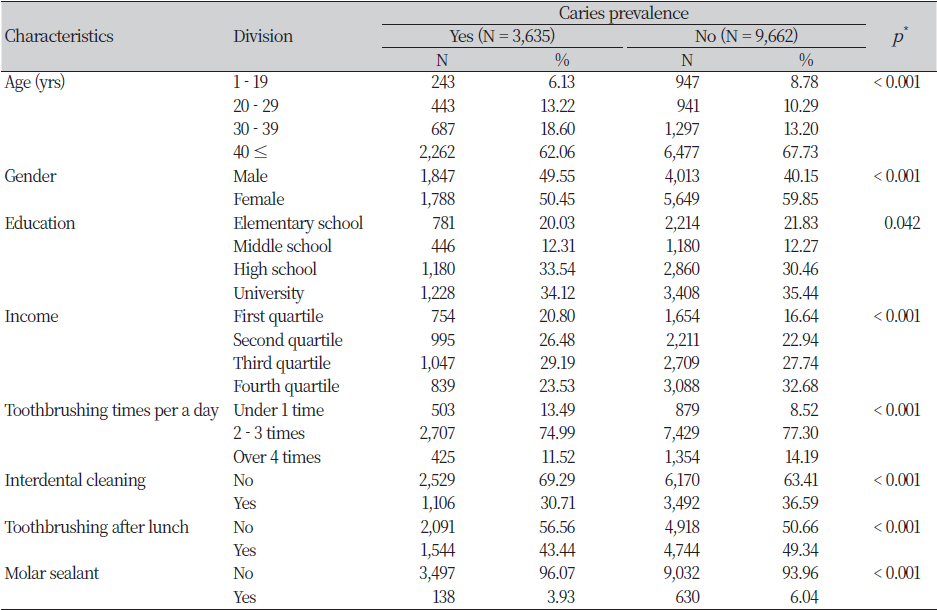Abstract
This study aimed to evaluate the relationship between pit and fissure sealants of the molars, and caries prevalence and experience to assess the effect of sealants on caries prevention. Data from 16,119 people were extracted from the seventh Korean national health and nutrition examination survey, which was conducted from 2016 to 2018. Demographic, socioeconomic, oral health-related behavioral, and oral examination survey data were collected as independent variables. SAS statistics for complex samples and multiple logistic regression analysis (Windows ver. 9.4) was used for the statistical analyses. Caries prevalence and experience were significantly associated with age, sex, daily toothbrushing frequency, interdental cleaning, and having molar sealant. Multiple logistic regression analysis revealed a significant association between having molar sealants and the caries prevalence and experience among participants under 30 years of age after adjusting socio-economic variables and toothbrushing-related factors. This study confirmed the effect of molar sealants on caries prevention in Korea. Our results support that the application of molar sealants in children, adolescents, and young individuals is effective in preventing caries.
Figures & Tables

Table 1. General characteristics of subjects by caries prevalence


